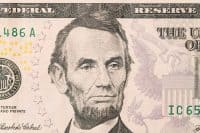 A potential double dip recession was a large concern a year and a half ago. There was a belief that the deep economic downturn of 2008 and 2009 could not generate enough momentum for an even modest recovery. Then, the unemployment rate started to fall, car sales began to rebound, same-store retail sales improved, corporate earnings moved higher and fuel prices dropped. The comeback was confirmed by a strong holiday sales season last year and fourth quarter GDP rose 3.1%. Unemployment has fallen below 9% much sooner than most economists believed it would.
A potential double dip recession was a large concern a year and a half ago. There was a belief that the deep economic downturn of 2008 and 2009 could not generate enough momentum for an even modest recovery. Then, the unemployment rate started to fall, car sales began to rebound, same-store retail sales improved, corporate earnings moved higher and fuel prices dropped. The comeback was confirmed by a strong holiday sales season last year and fourth quarter GDP rose 3.1%. Unemployment has fallen below 9% much sooner than most economists believed it would.
It has only taken a few weeks, but the chances of a double dip recession have increased. The term is mentioned more often in the media and in speeches by economists. Several large companies have said that their margins and sales may be hurt by inflation.
There are a relative small number of reasons that the economy has begun to slow and most of these have worsened quickly. This 24/7 Wall St. analysis looks at each one, explains how its trajectory and momentum has changed this year, and how it could derail the economic recovery.
1. Wages
Wages fall behind inflation. The Labor Department said that real wages fell in March, the fifth straight monthly dip. Inflation has risen sharply at the same time. Retail prices may not have spiked yet, with the exception of gasoline, but businesses will have to start to pass along the rising costs of their raw materials to their customers. People cannot afford to maintain the lifestyles that they could just six months ago.
2. Real Estate
Real estate prices could fall another 10% this year. Real estate guru Robert Shiller, the creator of the Case-Shiller index, said that home prices could plunge as much as 10% to 25% before the market bottoms. That would have several effects if it happens. The first is that the number of mortgages which are underwater could rise by the millions. Most estimates are that 11 million home loans are worth more than the properties they are underwriting. Desperate homeowners who cannot afford their mortgages will find it harder and harder to sell, particularly if they need to pay a bank the difference between loan value and home value at the close of a sale. Long-term home owners who bought their houses before 2000 can still hope to have some real estate equity when they retire. Home price attrition would kill that hope and with it the belief many have that they can fund their retirements. Concerns about future income shortfalls almost always hurt current consumer spending.
3. Unemployment
Long-term unemployment has not improved. The number of people in the US who have been unemployed is more than 4 million by most estimates. If individuals who have stopped looking for work are included, the figure would be much higher. The longer people are out of work, the more likely that they will exhaust their financial resources. If that happens, they need to rely on family or private charities for basic support such as food, clothing and shelter. Obviously, people with no income are not consumers. The problem is broader than that. Families which care for unemployed relatives have less discretionary income to spend on themselves.
4. Gasoline prices.
This problem touches affects every other one on the list but is insidious all on its own. The price of gas is up 35% in one year. A family that buys 300 gallons each month has to pay about $3,600 more on an annual basis to drive than it did a year ago. Three hundred miles is very little for a two income household with two people who commute by car. The other impact of rapidly rising gas prices is psychological. People look at a spike in fuel costs and often assume that the problem will get worse.
5. Labor Productivity
Non-farm business sector labor productivity increased at a 2.6% annual rate during the fourth quarter of 2010, according to the U.S. Bureau of Labor Statistics. That is on top of several “improvements” in the previous quarters of 2010. Productivity tends to help business profits and hurt job creation because businesses learn to do more with fewer workers. Economists hoped that as the economy improved that businesses would add workers to support new sales. That will not happen if the recovery stalls.
6. Small Business Credit
Lack of access to credit for small businesses. The US Small Business Administration reported in its 2010 Small Business Economy document that businesses with 500 or fewer people now employ about half of the US private labor workforce and create about 50% of private US GDP. But, these firms were hurt more by the recession than larger companies. In the first quarter of 2009, small companies accounted for 60% of all job losses. The main reason for that damage and the primary reason small business has not recovered well is access to credit. Large companies currently have unprecedented access to capital and interest rates are at historic lows. A large number of huge corporations have so much cash that they do not need access to capital at all. Banks are more willing to lend money to small businesses, but the improvement is modest. The Wall Street Journal reports that “the rebound in lending remains in its early stages, with credit growth more anemic than in past recoveries.”
7. Government Employment
Cuts in government employment. Austerity may be good for the federal debt, but it is bad for public employees. And, the problem is not limited to Washington. States and municipalities have found that the capital markets want higher and higher interest rates to put money into government entities. The fight over jobs and job benefits may be most visible in places like Wisconsin now, but austerity at the federal level will cause job reductions in everything from the military to the Post Office.
8. Tax Cuts
Muted benefit of low taxes. When the House voted 277 to 148 in December to extend the Bush tax cuts, continue unemployment benefits, and provide some tax relief for corporations, the theory what that the President’s signature would assure GDP stimulus in 2011. The federal government gave up about $800 billion in tax receipts over the next two years because of the action. Estimates vary, but a typical American household should have benefited by over $1,000 because of the decision. That money would be reflected in improved consumer spending and business investment this year. The trouble is that high fuel prices and rising commodities costs will negate the value of the lower taxes and the extra money that they put into the economy.
9. Equity Markets
Slower stock market gains, or a drop. A great deal of the money lost by American investors, US mutual funds, and pension funds due to the collapse of the stock market, from 14,000 in October 2007 to 6,600 in March 2009. The DJIA is 88% higher that it was at the trough. Those gains have helped consumer spending as people’s portfolios have improved. But, that improvement will not continue at a 40% per year rate. And, the market has gone up enough that high commodities prices or slowing GDP growth could cause another sell-off. People and corporations with money in the market could feel poor very quickly if the market behaves much differently than it has for the last two years.
10. Stimulus
The effects of the $787 billion stimulus are gone. The American Recovery and Reinvestment Act was meant to have an effect on the economy beginning when it was signed into law in February 2009. The Council of Economic Advisers said that it would take a number of quarters for the money to reach all parts of the economy. USA Today reported that Nariman Behravesh, chief economist at IHS Global Insight, predicted the biggest effects would occur in 2010 from the bill’s spending for aid to state and local governments and on projects such as roads, bridges and transit . Most of the money is spent now. State and local governments certainly could use more help. Whatever jobs were to be saved or created by the funds have been saved or created. Nobel Prize-winning economist Paul Krugman argued in mid-2010 that “We are looking at what could be a very long siege here. We really are at a stage where we should have a kitchen-sink strategy. We should be throwing everything we can get at this.” If his concerns were accurate, it is a bit late to have acted on them. The stimulation from the stimulus has come and gone.
Douglas A. McIntyre
Get Ready To Retire (Sponsored)
Start by taking a quick retirement quiz from SmartAsset that will match you with up to 3 financial advisors that serve your area and beyond in 5 minutes, or less.
Each advisor has been vetted by SmartAsset and is held to a fiduciary standard to act in your best interests.
Here’s how it works:
1. Answer SmartAsset advisor match quiz
2. Review your pre-screened matches at your leisure. Check out the advisors’ profiles.
3. Speak with advisors at no cost to you. Have an introductory call on the phone or introduction in person and choose whom to work with in the future
Thank you for reading! Have some feedback for us?
Contact the 24/7 Wall St. editorial team.





